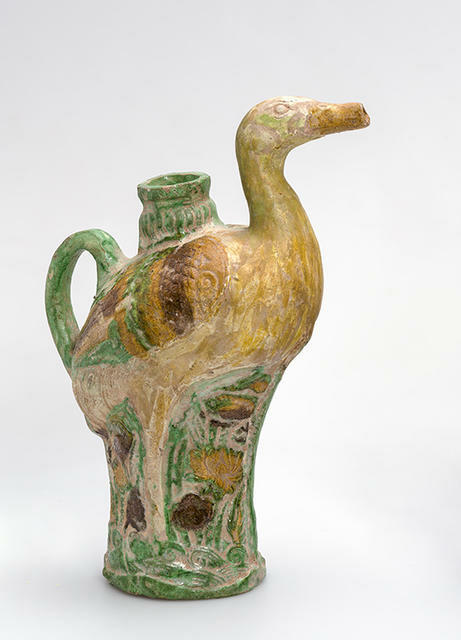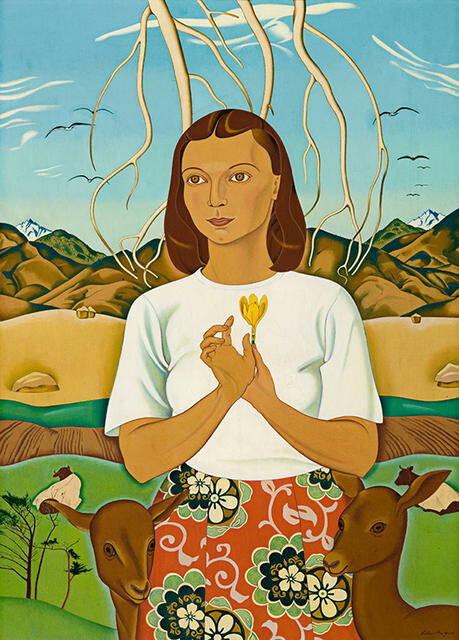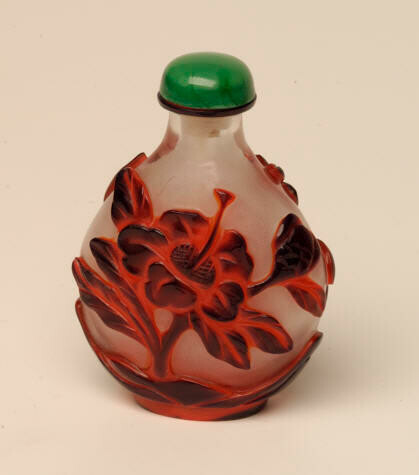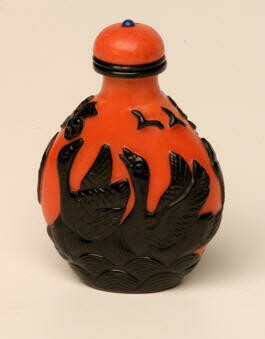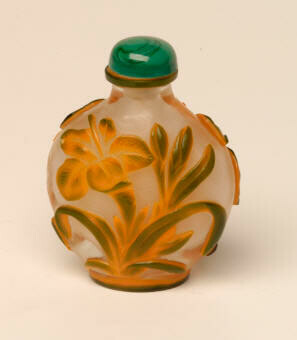Art Detectives
By Tim Jones
Here are the works that appeared in the exhibition Art Detectives, with the labels used in that show, written by curator Ken Hall.
The exhibition ran from 20 October 2006 - 25 March 2007.

John Eastgate A chest of New Zealand, as a specimen of the carving of that country 1784-1786
This fine engraving includes two views of an elaborate, carved Maori waka huia collected by Captain James Cook during his first visit to New Zealand in 1769. Now in the collection of the British Museum, this treasure box once held precious items such as huia tail feathers, hair combs, tiki and other greenstone and bone ornaments.
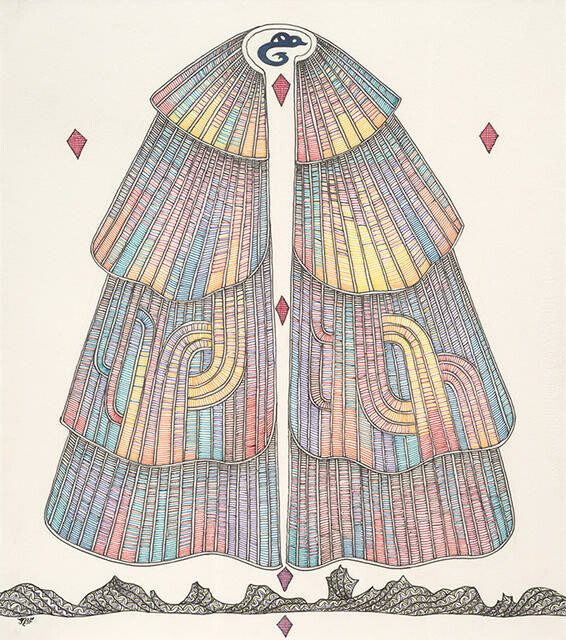
John Bevan Ford Spöring’s View of Motuaro (from the Endeavour, 1769) 1992
A rainbow coloured peke (Maori rain cape) floats above an outline of rocky hills as seen from a distant ship. Here, Maori artist John Bevan Ford recalls drawings by Herman Spöring, an artist on board Captain Cook’s ship Endeavour in 1769 at the Bay of Islands.
Ford was inspired by his time spent at the British Museum in the 1980s studying Maori taonga or treasures, including weaving and carvings collected by Cook. While referring to European exploration, this drawing also speaks of a long presence for Maori in this land, with the peke a symbol of mana and protection.

Harry Linley Richardson Bathing The Baby c. 1913-c. 1914
While the baby is lowered gently into the soapy bubbles, her elder sister looks on. The baby, whose name was Joan, also appears as a teenager in the painting Cynthia’s Birthday, which can be seen in the gallery across the wavy bridge. Harry Linley Richardson liked to paint his family from life, but only if they kept very still!

Peter Siddell Urban Memory 1982
While Sylvia Siddell’s drawing ‘Banquet’ is jumping with action, her husband Peter’s painting is the opposite, and is perfectly calm. At first it looks very real, but you will soon find that this is an invented, dreamlike landscape. The artist has deliberately left out lots of things that should be here - can you tell what’s missing?
Mikhail Fyodorovich Larionov 'Le Grillon', Musique de Ravel ('The Cricket', Music of Ravel) 1919
In Paris in 1919, the Russian artist Mikhail Larionov with his partner Natalia Goncharova published a folio of prints of their extraordinary costume designs for experimental theatre.
Larionov was inspired at this time by the excitement of the machine age, as well as by mechanical toys, Russian folk art and the art of children. These two designs were for a ballet that was never staged, 'mechanical costumes" that Larionov intended the dancer to wear while moving in a sharp, machine-like manner. Not very comfortable!
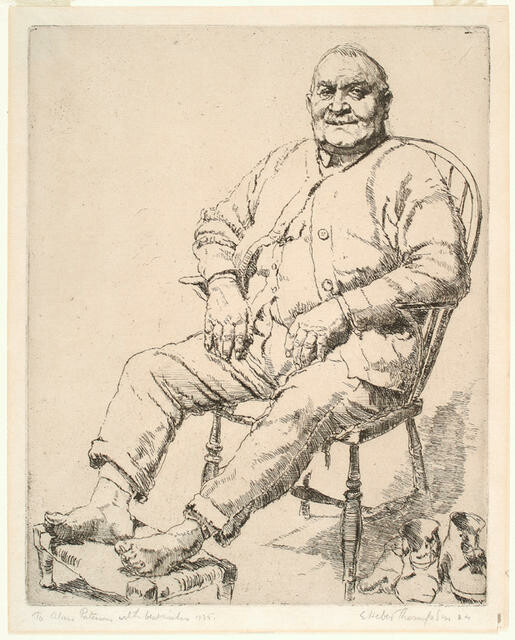
Ernest Heber Thompson A Suffolk Yeoman 1923
This man hasn’t been tramping, but it looks like he’s had a long day, and he seems pleased to rest his feet. What can you see in this etching that also appears in the other artworks nearby?
Ernest Heber Thompson grew up in Dunedin, and served as a soldier in Egypt and France during World War I. After recovering from serious war injuries in England, he stayed to study art and spent the rest of his life there as an artist and teacher. He made many drawings and etchings of the people he saw on his travels, especially in France and Spain, and his artworks show warmth and empathy towards his subjects.

Gordon Walters Untitled 1987
Can the secret of this painting be unlocked? What can it mean? It’s time to get on the case!
The artist Gordon Walters seems to have been making his own investigation - into what makes a painting. Deliberately limiting his use of shape and colour, he has worked skilfully to create a serene, balanced, geometric work. While this is hard-edged and mathematical, it is also puzzle-like and playful, showing that even the simplest of enquiries can result in discovery and learning.
did you know…
‘Minimalism’ is the name for a style of art (usually in painting or sculpture) in which the artist is interested in reducing their work to the simplest shapes or forms, and sometimes colours. It’s different to other kinds of art because it’s not about making an artwork ‘of something’ - instead the artwork itself is the thing to be experienced.

Nigel Brown Trampers 9 1980
At the age of ten, Nigel Brown and his father went on the first of many long tramping trips into the New Zealand bush. The memory of these trips left a strong impression on the artist, and in his late twenties he made a large series of paintings inspired by the experience.
Nigel Brown sees art as “a mystery growing out of the obvious”. Here, we might begin to wonder why these tired-looking trampers seem to be lost in their own thoughts. Do you think they have nearly reached the place where they want to be? Are they enjoying their journey?

Grant Lingard Mummy’s Boy 1993
.In the exhibition Art Detectives (20 October 2006 - 25 March 2007) this work appeared with the following label:
Grant Lingard has used a surprising material to make this sculpture of a pair of rugby boots, and has left us with something to puzzle over. Rugby boots could be seen as a symbol of what it means to be a Kiwi male, but the artist has turned this idea around to say something different here.
Perhaps the title offers a clue. Could the artist be telling us about his own experience, and getting back at schoolmates who bullied him and gave him a hard time for not playing rugby and for not fitting in?

Artist Unknown Snuff Bottle 1875-1908
Snuff is a kind of powdered tobacco (the stuff they put in cigarettes) to be sniffed up the nose - it’s a bit disgusting, so don’t try this at home! In China, where these bottles are from, snuff was mixed with mint and other scented plants, and was thought to help treat various mild illnesses.
Most of these bottles are made of polished glass, with the coloured top layer carefully ground back to make these incredible designs.

